History & Heritage: Women's History Month at Westphal
Curated by Professor Francis Tanglao Aguas, Associate Dean of Diversity, Equity & Inclusion
March 06, 2023
Women’s History Month in the United States first began as a weeklong local celebration in Santa Rosa, California during the week of March 8 in sync with International Women’s Day, until it spread to other communities. It gained national prominence when President Jimmy Carter signed the first Presidential Proclamation declaring the Week of March 8, 1980 as National Women’s History Week. In 1987, Congress passed Public Law 100-9, designating March as “Women’s History Month.”
Westphal DEI is proud to honor 10 transformative, resilient, innovative, creative, entrepreneurial, and inspiring women to commemorate and celebrate the movement of all women towards equity, equality, and full agency. These women’s stories represent and illuminate not only the grand achievements that gain prominence for individual effort towards success, but more so the daily battles and struggles in the journey to every human’s right to respect and dignity, because in the words of Secretary Hillary Rodham Clinton, women’s rights are human rights.
JULIE DASH
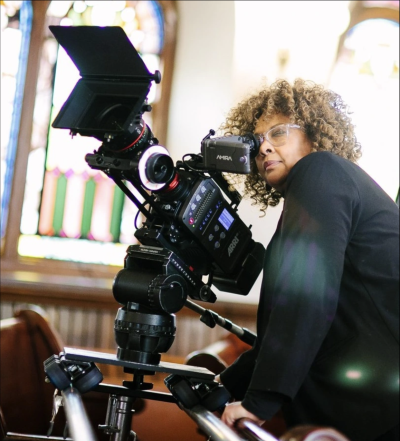
Julie Ethel Dash (born October 22, 1952) is an American film director, writer and producer. Dash received her MFA in 1985 at the UCLA Film School and is one of the graduates and filmmakers known as the L.A. Rebellion. The L.A. Rebellion refers to the first African and African American students who studied film at UCLA. After she had written and directed several shorts, her 1991 feature Daughters of the Dust became the first full-length film directed by an African-American woman to obtain general theatrical release in the United States.
Dash began work on a story in 1975 that was inspired by her father's Gullah family background and immigration from the Sea Islands of Georgia. This would become the screenplay Daughters of the Dust, which went into production after she received $800,000 in financing from PBS in 1988. The film, set in 1902, revolves around three generations of Gullah women in the Peazant family on St. Helena Island off the coasts of Georgia and South Carolina. Innovative with its use of Gullah dialogue and interwoven story-lines among the predominately female cast, the film focuses on ancestral and matriarchal story lines as well as the history of former slaves who settled on the island and formed an independent community there. The screenplay was written in the dialect of the island settlers with no subtitles, resulting in an immersive language experience.
Dash's experimental approach to narrative structure was something rarely seen in U.S. feature-filmmaking. Upon the film's re-release, she said “I...wanted to do a film that was so deeply embedded in the culture, was so authentic to the culture that it felt like a foreign film.”
Daughters of the Dust premiered at the Sundance Film Festival in 1991, where it was nominated for the Grand Jury Prize and won a cinematography award. It became the first feature film by an African American woman to be distributed in the United States in theatrical release and gained critical praise for its use of dialect and music composed by John Barnes, as well for its cinematography and visual imagery.
The New York Times called Dash a "strikingly original film maker," noting that "for all its harsh allusions to slavery and hardship, the film is an extended, wildly lyrical meditation on the power of African cultural iconography and the spiritual resilience of the generations of women who have been its custodians.”
Source: Wikipedia and UCLA
DELIA ANN DERBYSHIRE

Delia Ann Derbyshire was an English musician and composer of electronic music. She carried out notable work with the BBC Radiophonic Workshop during the 1960s, including her electronic arrangement of the theme music to the British science-fiction television series Doctor Who.
Her life has been dramatised on stage, screen, and radio, and although she remains most famous for her arrangement of the Doctor Who theme tune, there was far more to her creative activity both at the BBC and beyond.
Delia Derbyshire was born in Coventry in 1937 and grew up in what she described as an upper working-class family. At school, she demonstrated an affinity for the potential of everyday objects to create music and distinctive sounds from her childhood would haunt her later work.
There are echoes of the air raid sirens during the Blitz while the clogs of factory workers bustling along the cobbled streets of Preston (where she was evacuated during the Second World War) are suggested in the 'clip clop' rhythms of pieces like Pot au Feu (1968).
SOURCE: https://www.bbc.com/historyofthebbc/100-voices/pioneering-women/women-of-the-workshop/delia-derbyshire
ARTEMISIA GENTILESCHI
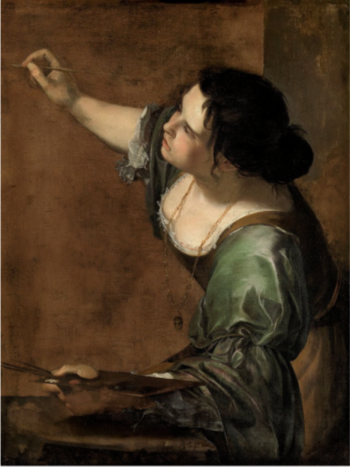 Artemisia Lomi or Artemisia Gentileschi (8 July 1593 – c. 1656) was an Italian Baroque painter. Gentileschi is considered among the most accomplished seventeenth-century artists, initially working in the style of Caravaggio. She was producing professional work by the age of 15. In an era when women had few opportunities to pursue artistic training or work as professional artists, Gentileschi was the first woman to become a member of the Accademia di Arte del Disegno in Florence and she had an international clientele.
Artemisia Lomi or Artemisia Gentileschi (8 July 1593 – c. 1656) was an Italian Baroque painter. Gentileschi is considered among the most accomplished seventeenth-century artists, initially working in the style of Caravaggio. She was producing professional work by the age of 15. In an era when women had few opportunities to pursue artistic training or work as professional artists, Gentileschi was the first woman to become a member of the Accademia di Arte del Disegno in Florence and she had an international clientele.
Many of Gentileschi's paintings feature women from myths, allegories, and the Bible. Some of her best known subjects are Susanna and the Elders (particularly the 1610 version in Pommersfelden), Judith Slaying Holofernes (her 1614–1620 version is in the Uffizi gallery), and Judith and Her Maidservant (her version of 1625 is in the Detroit Institute of Arts). Gentileschi was known for being able to depict the female figure with great naturalism and for her skill in handling color to express dimension and drama.
For many years Gentileschi was regarded as a curiosity, but her life and art have been reexamined by scholars in the 20th and 21st centuries. She is now regarded as one of the most progressive and expressive painters of her generation, with the recognition of her talents exemplified by major exhibitions at internationally esteemed fine art institutions, such as the National Gallery in London.
Feminist studies increased the interest in Artemisia Gentileschi, underlining her own sexual assault and subsequent mistreatment, and the expressive strength of her paintings of biblical heroines, in which the women are interpreted as willing to manifest their rebellion against their condition. In a research paper from the catalogue of the exhibition "Orazio e Artemisia Gentileschi," which took place in Rome in 2001 (and after in New York), Judith W. Mann critiques feminist opinion of Artemisia, finding that old stereotypes of Artemisia as sexually immoral have been replaced by new stereotypes established in feminist readings of Artemisia's paintings.
Source: https://www.studiesweekly.com/female-painters-art-history/#:~:text=Artemisia%20Gentileschi%20(1593%E2%80%93c.&text=Italian%20Baroque%20painter%20Artemisia%20Gentileschi,age%2C%20according%20to%20Hall%20W.
MARY HALLOCK GREENEWALT
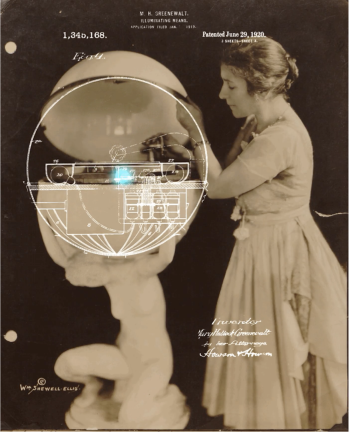 Mary Hallock Greenewalt always wanted to be known as an inventor. Born on September 8, 1871, in Syria Vilayet—present-day Beirut—to a Syrian mother, Sara Tabet, and an American father, she was sent at age 11 to live with relatives in Philadelphia. She began her professional life as a pianist in the Philadelphia and Pittsburgh orchestras but around 1905, when Greenewalt was in her mid-30s, she began to experiment with a new kind of instrument. It would be a feast for the senses, combining color with sound. During performances, Greenewalt would use the various pedals, switches, and keyboards on her machine—essentially an early synthesizer—to play songs that were synchronized with projected light. She called her modified organ the “Sarabet.”
Mary Hallock Greenewalt always wanted to be known as an inventor. Born on September 8, 1871, in Syria Vilayet—present-day Beirut—to a Syrian mother, Sara Tabet, and an American father, she was sent at age 11 to live with relatives in Philadelphia. She began her professional life as a pianist in the Philadelphia and Pittsburgh orchestras but around 1905, when Greenewalt was in her mid-30s, she began to experiment with a new kind of instrument. It would be a feast for the senses, combining color with sound. During performances, Greenewalt would use the various pedals, switches, and keyboards on her machine—essentially an early synthesizer—to play songs that were synchronized with projected light. She called her modified organ the “Sarabet.”
Tinkering with that creation—and then defending her claims on the inventions—became her life’s work. Between 1919 and 1926, Greenewalt filed 11 patents with the United States Patent Office for inventions related to the Sarabet. In 1932, she successfully sued General Electric for copyright infringement on the rheostat, a device she patented that varied the resistance of the electricity in the Sarabet.
Greenewalt and her inventions may not be widely known to most musicians today, but they were essential to the creation of many electric instruments, in particular the synthesizer, which would revolutionize the music industry in the 1960s. Greenewalt would receive 11 patents, all of which were in some way related to the development of her color organ and the principles of her work. “I want them to see,” she said of her audience, “something more beautiful than they have ever seen before.”
Source: https://www.topic.com/industrial-light-and-magic and Professor Emil Polyak
ZAHA HADID

Zaha Hadid, in full Dame Zaha Hadid, (born October 31, 1950, Baghdad, Iraq—died March 31, 2016, Miami, Florida, U.S.), Iraqi-born British architect known for her radical deconstructivist designs. In 2004, she became the first woman to be awarded the Pritzker Architecture Prize.
Hadid began her studies at the American University in Beirut, Lebanon, receiving a bachelor’s degree in mathematics. In 1972 she traveled to London to study at the Architectural Association, a major center of progressive architectural thought during the 1970s. There she met the architects Elia Zenghelis and Rem Koolhaas, with whom she would collaborate as a partner at the Office of Metropolitan Architecture. Hadid established her own London-based firm, Zaha Hadid Architects (ZHA), in 1979.
In 1983 Hadid gained international recognition with her competition-winning entry for The Peak, a leisure and recreational center in Hong Kong. This design, a “horizontal skyscraper” that moved at a dynamic diagonal down the hillside site, established her aesthetic: inspired by Kazimir Malevich and the Suprematists, her aggressive geometric designs are characterized by a sense of fragmentation, instability, and movement.
In addition to the Pritzker Prize and the Stirling Prize, her numerous awards included the Japan Art Association’s Praemium Imperiale prize for architecture (2009) and the Royal Gold Medal for Architecture (2016), RIBA’s highest honour. Hadid was a member of the Encyclopædia Britannica Editorial Board of Advisors (2005–06). In 2012 she was made a Dame Commander of the Order of the British Empire (DBE).
Source: https://www.britannica.com/biography/Zaha-Hadid
YAYOI KUSAMA

Yayoi Kusama (草間 彌生, Kusama Yayoi, born 22 March 1929) is a Japanese contemporary artist who works primarily in sculpture and installation, and is also active in painting, performance, video art, fashion, poetry, fiction, and other arts. Her work is based in conceptual art and shows some attributes of feminism, minimalism, surrealism, Art Brut, pop art, and abstract expressionism, and is infused with autobiographical, psychological, and sexual content. She has been acknowledged as one of the most important living artists to come out of Japan, the world's top-selling female artist, and the world's most successful living artist. Her work influenced that of her contemporaries, including Andy Warhol and Claes Oldenburg.
Kusama was raised in Matsumoto, and trained at the Kyoto City University of Arts for a year in a traditional Japanese painting style called nihonga. She was inspired by American Abstract impressionism. She moved to New York City in 1958 and was a part of the New York avant-garde scene throughout the 1960s, especially in the pop-art movement. Embracing the rise of the hippie counterculture of the late 1960s, she came to public attention when she organized a series of happenings in which naked participants were painted with brightly coloured polka dots. She experienced a period in the 70s during which her work was largely forgotten, but a revival of interest in the 1980's brought her art back into public view; Kusama has continued to create art, most recently and notably in installations in various museums around the world, from the 1950s through the 2020s.
Kusama has been open about her mental health and has resided since the 1970s in a mental health facility which she leaves daily to walk to her nearby studio to work. She says that art has become her way to express her mental problems. "I fight pain, anxiety, and fear every day, and the only method I have found that relieved my illness is to keep creating art," she told an interviewer in 2012. "I followed the thread of art and somehow discovered a path that would allow me to live.”
Source: Wikipedia and https://www.tate.org.uk/kids/explore/who-is/who-yayoi-kusama
ANNIE TURNBO MALONE
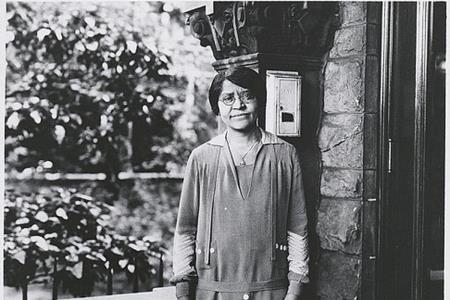
Annie Malone was born in 1869, in Metropolis, Illinois, to formerly enslaved parents and orphaned at a young age. From an early age, Malone understood that for African American women, appearance and grooming represented more than their personal style. It could also indicate a woman’s class and social standing. She realized that improving hair health could also have a positive effect on the lives of African Americans. This motivation, along with her early passion for styling her sisters’ hair, inspired Malone to develop products to help women adapt to a society that judged them based on how they met the American standard of beauty (which excluded the natural appearance of most African Americans).
Malone not only faced the challenges of being a Black woman in a segregated society but a businesswoman in a sexist society. Undeterred, she began experimenting with chemistry and established a successful business after developing a line of products that were advertised to help improve scalp health and promote hair growth. Some of these products included scalp preparations and her famous “Hair Grower.” After early success in Illinois, she moved to Missouri in 1902 and founded Poro College Company.
Poro College was founded as a cosmetics school and named after the Poro society—a secret organization in West Africa that exemplified physicality and spirituality. Not only did Poro College act as a training center to nurture and style Black hair, but it was also a significant source of employment for African Americans, especially women. Her “Poro agents,” ranging in ages from 16 to 80, were trained to sell her custom products and use the “Poro system” of scalp cleaning and hair nourishing. Over the company’s life span, there were tens of thousands of women and men sold Poro products around the the world.
Source: https://nmaahc.si.edu/explore/stories/annie-malone-and-madam-cj-walker-pioneers-african-american-beauty-industry and Denise Snow
VERA MOLNÁR

Vera Molnár (born 1924) is a Hungarian media artist living and working in France. Molnar is widely considered to be a pioneer of computer art and generative art, and is also one of the first women to use computers in her art practice.
Born in Hungary, she studied aesthetics and art history at the Budapest College of Fine Arts. In the 1940s and 50s, she created non-representational paintings. By 1959 she was making combinatorial images; in 1968 she would use a computer to create her first algorithmic drawings.
In the 1960s she founded two groups in France concerned with the use of technology within the arts: the Groupe de Recherche d’Art Visuel and Art et Informatique. 1976 took place her first solo exhibition in the gallery of the London Polytechnic.
Her work has been widely collected by major museums; in 2007 she was named a Chevalier of Arts and Letters in France.
Molnár was selected as one of 213 artists for the 59th Venice Biennale in 2022, where a gallery was dedicated to her works from the 1970s and ‘80s, including her renowned “Transformations” series of computer plotter drawings. In April 2022, Galerie 8 + 4 dropped a series of NFTs of Molnár’s new works. “I am very flattered, but a little overwhelmed by the idea,” she said. “For me, art is something you can hang on the wall.”
Source: Wikipedia and https://news.artnet.com/art-world/vera-molnar-venice-biennale-2098046 and Professor Emil Polyak
JOSIE CRUZ NATORI

Josie Natori (born Josefina Almeda Cruz, May 9, 1947) is a Filipino-American fashion designer and the CEO and founder of The Natori Company. Natori served as a commissioner on the White House Conference on Small Business. In March 2007 she was awarded the Order of Lakandula, one of the highest civilian awards in the Philippines. In April 2007, Natori received the "Peopling of America" Award from the Statue of Liberty - Ellis Island Foundation.[2] She often says her business philosophy is based around an "East-West mix" of culture and design.
She was raised in a close-knit Filipino family, as one of six siblings. Her first love was the piano, and she performed solo with the Manila Philharmonic Orchestra at the age of nine.[3] She learned about business from a young age; her grandmother also owned several businesses, including a pharmacy.
Natori moved to the United States in 1964 to attend Manhattanville College, where she took every economics course she could, and also enrolled in courses at Fordham University. She became a citizen in 1974. Natori has said: "There is no better place in the world for an immigrant to succeed than in the U.S. Follow your dream and make it happen."
The House of Natori was founded in 1977 by Josie Natori, CEO and Chief Creative Officer. What began with creating lingerie on her living room floor truly has evolved into a lifestyle. “Natori is a total concept, a way of life,” says Josie. She started the company from scratch, leaving a prestigious position on Wall Street, where she was the first female Vice President of Investment Banking at Merrill Lynch. Four decades later, Natori is one of the fashion industry’s most recognizable designer brands. The Natori company is proud to have remained a family business. Josie’s son Ken left Wall Street to join the company in 2007, and now serves as President.
Source: Wikipedia and https://www.natori.com/about-us/
RAMONA SAKIESTEWA
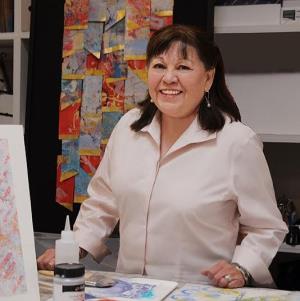 Ramona Sakiestewa grew up in the American Southwest where the land and sky informed her artwork. For over 30 years she has written and lectured about Native American weaving and contemporary art including a USIA Lecture tour of Japan. In addition to her own tapestry work, her studio has woven the works of other contemporary artists that includes Paul Brach, Frank Lloyd Wright and Kenneth Noland. Her own weavings reside in numerous corporate, private, and museum collections.
Ramona Sakiestewa grew up in the American Southwest where the land and sky informed her artwork. For over 30 years she has written and lectured about Native American weaving and contemporary art including a USIA Lecture tour of Japan. In addition to her own tapestry work, her studio has woven the works of other contemporary artists that includes Paul Brach, Frank Lloyd Wright and Kenneth Noland. Her own weavings reside in numerous corporate, private, and museum collections.
Recently she has changed media and is exploring constructed works-on-paper, print work and painting. She has shown her work nationally in numerous group and solo exhibitions. Concurrently for the last twenty years, Sakiestewa has worked with a series of nationally known architects designing elements for buildings and theming interiors. She has worked in a variety of media including stone, metal, carpet, and glass. Some of her work can be seen at the Tempe Performing Arts Center, Tempe AZ, Marriott Hotels in California and Washington DC, and the National Museum of the American Indian, Mall Museum, Washington, DC.
Sakiestewa was a participating artist in the Friends of Art and Preservation in Embassies in 2001. In 2006 Ramona was awarded the New Mexico Governor’s Award for Excellence in the Arts and was inducted into the New Mexico Women’s Hall of Fame. In 2007 the New Mexico Committee, of the National Museum of Women in the Arts, honored her.
Source: https://ramonasakiestewa.com/about/